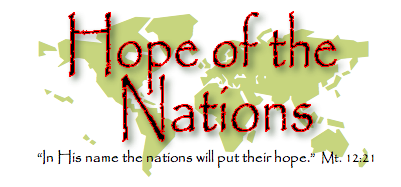Where to start? Well, start as you mean to go on, so they say.
You will recall how our initial interest was sparked. It was watching the disaster response to the Mozambican floods in 2000. Aspects of that response took ages!
In 2004, the UN’s Secretary General confirmed that the problem of natural disasters was getting worse.
Worse still, the Red Cross/Red Crescent says ‘the face of disasters is changing. Old ways of coping are proving inadequate. We need new approaches that boost people’s resilience to the full spectrum of physical, social and economic adversities they face.’ IFRC World Disasters Report 2004.
If disaster response interests you, then that’s a very interesting set of sources: The IFRC World Disasters reports.
And we had confirmation that we were trying to solve a real problem
In 2006, the UK said “We need a better system.” A system to make sure that we have available and are able to draw upon quickly the logistics required – for example – helicopters, ships and aircraft.” Hilary Benn at the UN. Also in The International Development Magazine, Issue 33, May 2006.
This and other research showed we were on the right track.
Solid foundations
There were other very helpful indicators. The book At Risk was considered a key text. SO our CEO had a brief meeting with one of its authors. And the CEO had conversations with the Coventry Centre for Disaster Management.
We didn’t want to rush in. If you do, you can easily seem arrogant. But you need to listen and learn first.
Now Wings knew we were looking at a real problem. said another way, we were building on solid foundations. Then we could start to analyse more deeply.
The detailed analysis
Our detailed analysis was built on the UN’s EM-DAT database. It is at the University of Louvain in Belgium. They have the disaster database for the whole world since 1900. And we thank them for their help. It took us six months.
So we looked at where to start Wings’ operations? Where were the worst disasters?
There are many ways of measuring disasters. And we focused our studies not on the worst disasters, but on disaster impact.
Focus on disaster impact
For Wings, it is where a disaster’s impact is greatest that we wanted to know. And we think the biggest impact is where the highest proportions of the population are affected. Not just the numbers. The percentage of the population. We think it is hard for any country to recover big percentages of the population are affected.
Also we think the disaster impact is also worst where the frequency of disasters is highest.
So we hunted the world disaster data base. We were hunting for countries where the percentage affected is high, and the disaster frequency is high.
Impact in South and Eastern Africa
In 2005 the UN said that 42% (!) of the population of Malawi had been hit by disasters. That’s huge.
Also, at the same time, we could see that the UN data said that South East Africa had six of the top fifteen countries for a high disaster frequency. And that is over a period of 20 years.
So, there are places where many people are affected and affected often. South and Eastern Africa.
Wings thinks that those people need the most help.
Other factors are important too.
- Poverty is an important factor. If people are affected often, then they need money to recover.
- And disease is a problem too.
And Sub Saharan Africa has some of the worst rates of poverty in the world. Also it is where the HIV/AIDS rates are also very high.
WE thought about GDP impact. But GDP impact is harder to assess. It is difficult to measure. We did see that recent famines had impacted up to 5% of the GDP of afflicted countries in South East Africa.
The equivalent in UK
So, for us in the UK, the equivalent of this Malawian scale of disaster in 2005 would impact 25 million people. And we would have had to dig into our pockets to find £19 billion. Even worse, we might see the same again in 2007 or 2008. I don’t know about you, but the UK press could have been on that disaster all the time. Instead, it appears that such things seem to warrant little coverage.
That’s why we focused on South and Eastern Africa!
Not theory – the first visit
So in September 2006, Adrian Nance went to see friends in Kenya, Tanzania and Malawi, with a short stop in Zambia.
He went to find out what it was like on the ground.
Why not find out more? Contact us?






0